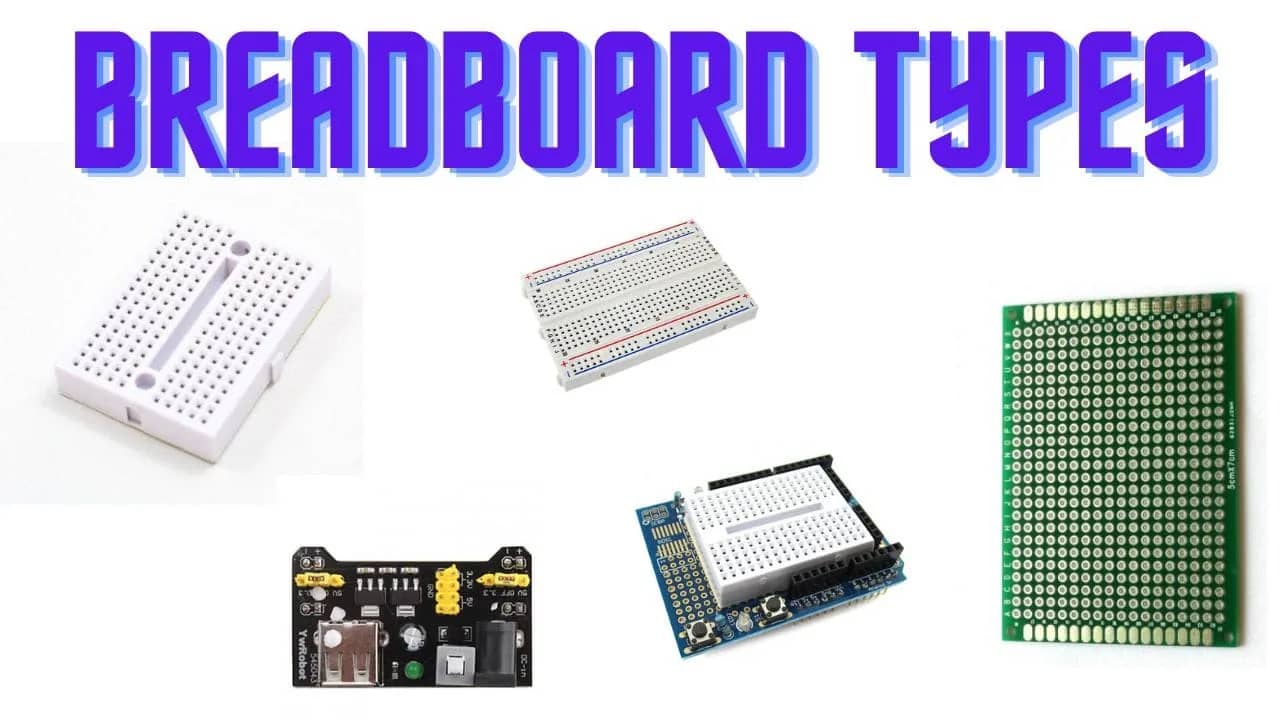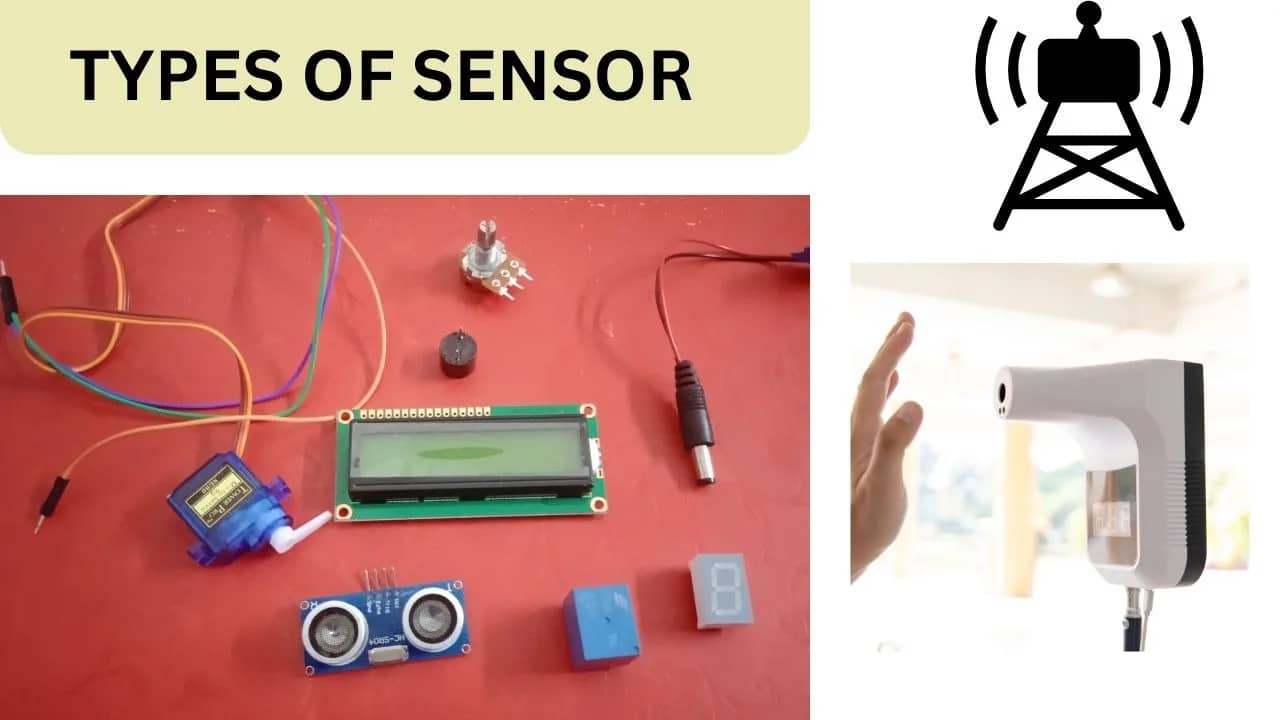Table of Contents
ToggleBreadboard: A Fundamental Tool in Programming
Introduction
In the world of electronics and programming, the breadboard stands as an unsung hero. It’s a humble yet invaluable tool that plays a pivotal role in prototyping and testing circuits, making it an essential component for programmers and electronics enthusiasts alike. While it may not be as flashy as the latest programming languages or high-end microcontrollers, the breadboard is the unsung hero that brings countless projects to life. In this article, we will explore the use of breadboards in programming, highlighting their importance and versatility.
What is a Breadboard?

Before delving into its programming applications, let’s begin by understanding what a breadboard is. A breadboard, also known as a prototyping board or solderless breadboard, is a device used for building and testing electronic circuits without soldering. It consists of a plastic board with numerous holes arranged in a grid pattern. Beneath the surface of the board, these holes are connected in a specific way, allowing for the easy insertion of electronic components.
The Magic of Breadboard Connections
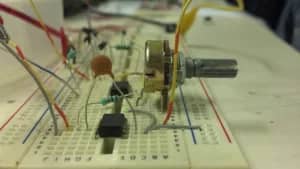
One of the key features of a breadboard is its interconnectedness. Each row of holes on the breadboard is electrically connected, usually consisting of five holes in a row. This arrangement makes it easy to connect components together by simply inserting their leads or wires into the appropriate holes.
Programming Applications of Breadboards
1. Prototyping Circuits: Breadboards are indispensable tools for programmers and electronics enthusiasts when designing and prototyping circuits. When developing a new electronic project, it’s essential to test and refine the circuit before moving to a permanent soldered design. Breadboards allow you to experiment with various components, connections, and configurations quickly and easily.
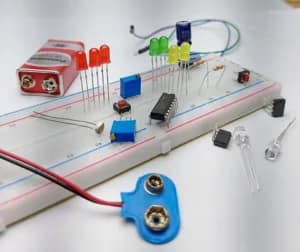
2. Microcontroller Projects: Breadboards are commonly used in microcontroller-based projects. When working with microcontrollers like Arduino or Raspberry Pi, breadboards simplify the process of connecting sensors, displays, and other peripherals to create interactive systems. This modularity and flexibility are especially useful when you need to iterate on your project or make quick changes.
3. Logic Circuits: Programmers often use breadboards to experiment with logic circuits, such as building logic gates, flip-flops, or even small digital processors. Breadboards make it easy to test and visualize the behavior of these circuits before implementing them in more complex systems.
4. Sensor Prototyping: Sensors are a crucial part of many programming projects, from temperature sensors in home automation to ultrasonic sensors in robotics. Breadboards make it convenient to interface these sensors with microcontrollers and write the necessary code to read and process sensor data.
5. Educational Tool: Breadboards are widely used in educational settings to teach programming and electronics. They provide a hands-on, practical approach to learning, allowing students to experiment with circuits and understand the fundamental concepts of electronics.
6. Debugging: When debugging a circuit or program, breadboards can be instrumental in isolating and identifying issues. You can easily swap out components, reconfigure connections, and test different sections of your circuit to pinpoint problems.
In the realm of programming and electronics, the breadboard is a versatile and indispensable tool. Its ability to facilitate rapid prototyping, experimentation, and testing of circuits makes it a crucial asset for programmers and electronics enthusiasts. Whether you are a seasoned developer working on complex microcontroller projects or a student learning the basics of electronics, the breadboard will remain a fundamental part of your toolkit. So, next time you embark on an electronics project, don’t forget to give credit to this unassuming yet invaluable tool – the breadboard.
Breadboards are essential tools for electronics enthusiasts and engineers, and there are several types available, each catering to specific needs and preferences. Here are some common types of breadboards:
1. Solderless Breadboard:
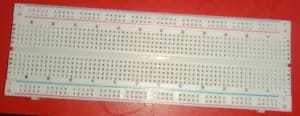
– Full-Size Breadboard: This is the most common type of breadboard, featuring a standard size and layout. It typically has rows and columns of interconnected holes, making it suitable for a wide range of projects.

– Mini Breadboard: These are smaller versions of full-size breadboards, often used for more compact projects or when portability is essential.
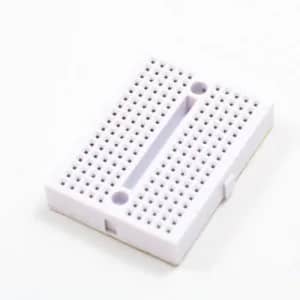
– Large Breadboard: These are larger than standard breadboards, offering more space for prototyping larger and more complex circuits.
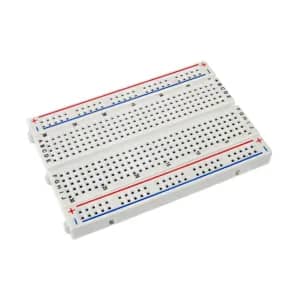
Photo credits: https://www.digikey.in/
2. Stripboard (Veroboard):
– Stripboards consist of a copper-clad board with parallel strips of copper running across it. You can cut or break these strips to create customized connections for your circuit. Stripboards are useful for more permanent prototypes where soldering is required.
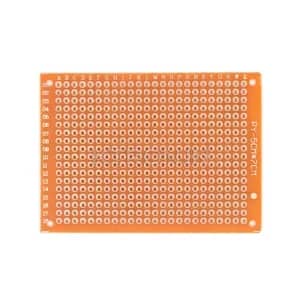
Photo credits:https://www.ktron.in/
3. Perfboard (Prototype Board):
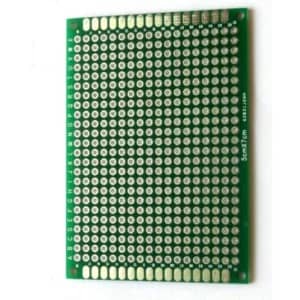
Phots Credits:https://www.electronicscomp.com/
– Perfboards are similar to stripboards but lack the pre-cut copper strips. They have a grid of holes, and you must solder wires or components directly to create connections. These are suitable for semi-permanent or permanent projects.
4. Breadboard with Power Rails:

– Some breadboards come with built-in power rails, which are long strips on either side of the board dedicated to power connections. This is convenient for projects requiring a stable power supply.
5. Solderable Breadboard (Protoboard):

Photo Credits: https://evelta.com/
– These breadboards combine the convenience of a solderless breadboard with the option to solder components directly onto the board for a more permanent setup.
6. Wire-Wrap Breadboard:
– Wire-wrap breadboards have holes specifically designed for wire-wrap connections, which use a special tool to tightly secure wires to the board. These boards are suitable for high-frequency or precision applications.
7. Transparent Breadboard:
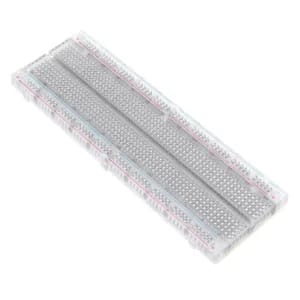
– Transparent breadboards have a clear plastic body, allowing you to see the connections and components underneath. This can be helpful for educational purposes or when you want a clear view of your circuit.
8. Breadboard Modules:
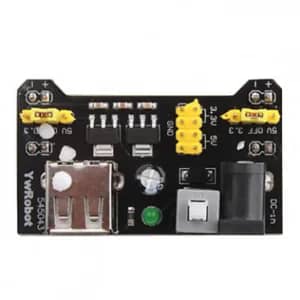
Photo credits:https://www.electronicscomp.com/
– These are pre-wired breadboard-like structures that come with specific functions or components already integrated, such as motor driver modules or LED driver boards. They simplify the process of building specific types of circuits.
9. Breadboard Shields:
– These are specialized breadboards designed to fit on top of microcontroller development boards like Arduino or Raspberry Pi. They provide a convenient platform for prototyping projects with these boards.
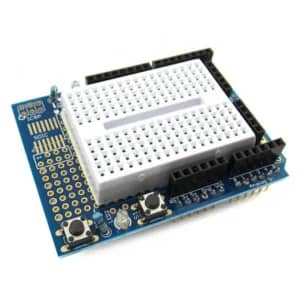
Photo Credits:https://www.electronicscomp.com/
10. High-Frequency Breadboard:
– These breadboards are designed to minimize parasitic capacitance and inductance, making them suitable for high-frequency and RF (radio frequency) applications.
When selecting a breadboard for your project, consider factors such as the size of your circuit, the level of permanence required, and any specific features or requirements. Having a variety of breadboard types in your toolkit ensures that you can efficiently prototype and develop a wide range of electronic projects.
